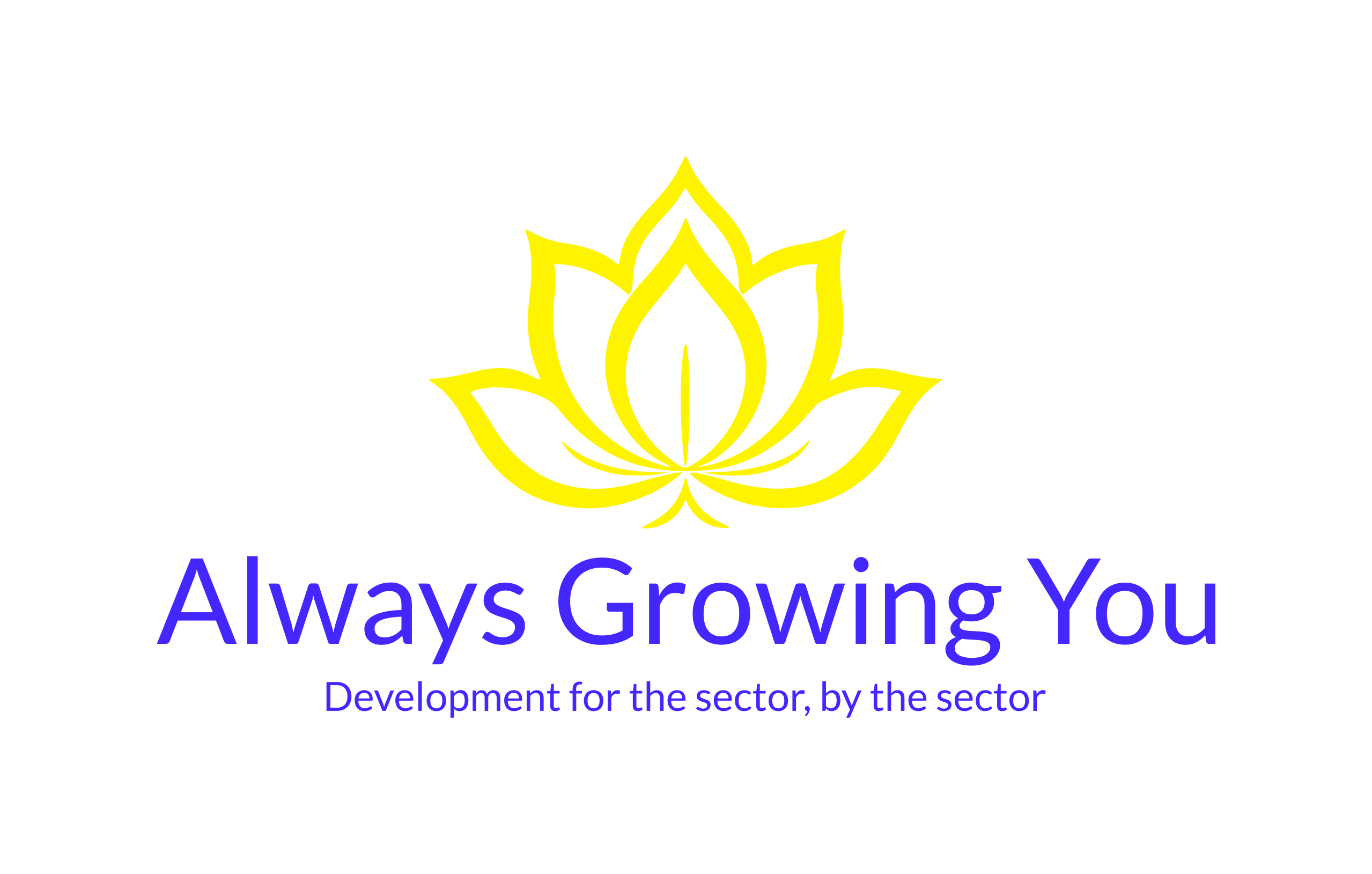A setting who gets this right will…
- Have a good bank of resources that are well used and well loved and not having boxes of resources in the back of the cupboard that nobody uses because:
- staff members don’t know they exist
- staff members don’t know how to use them
- Have confident practitioners who know what’s available, where to find it, and how to adapt it to suit different children and learning experiences.
- Encourage a culture of curiosity, where trying out ideas, rethinking materials, and sharing creative solutions is part of everyday practice.
“Start where you are. Use what you have. Do what you can.” Arthur Ashe
In early years, resourcefulness isn’t just a nice-to-have—it’s a mindset that transforms learning. When practitioners are resourceful, they model problem-solving, adaptability, and creativity for children. It shows that you don’t need the newest or fanciest tools to create meaningful, engaging learning experiences. Instead, you can spark curiosity and imagination by using everyday items in new ways. Resourcefulness also supports sustainability, helps settings manage budgets wisely, and encourages collaboration across teams. Most importantly, it empowers educators to make the most of every moment and every material—so no opportunity for learning is wasted.

Why does this matter?
At the heart of our ethos is the belief that great early years practice doesn’t come from having the most expensive resources, but from making the most of what we already have. Being resourceful encourages creativity, problem-solving, and collaboration—skills we hope to foster not only in children but within our team too. It reflects a mindset of possibility: seeing potential in everyday materials, valuing our environment, and using what’s around us with care and imagination.
When educators understand the value of resourcefulness, they’re better equipped to repurpose existing resources in practical, inspiring ways. It empowers them to take ownership of their environment, experiment with new ideas, and share what works. Respect for materials, equipment, and shared spaces becomes part of the culture, teaching children—by example—that how we care for things matters just as much as what we do with them. This approach aligns with our commitment to sustainability, creativity, and intentional teaching.
Learn more on this point below…
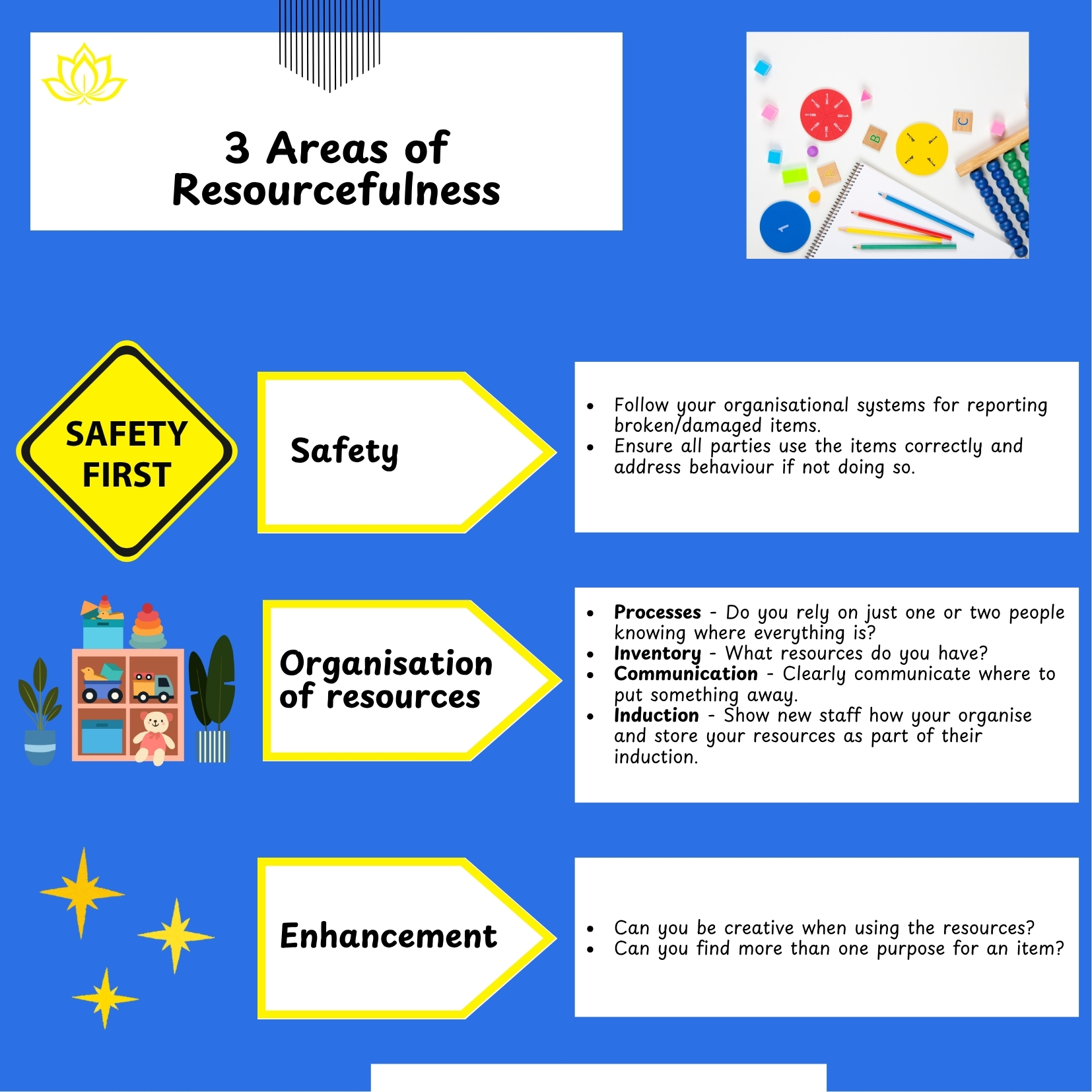
What do Ofsted Reports capture?
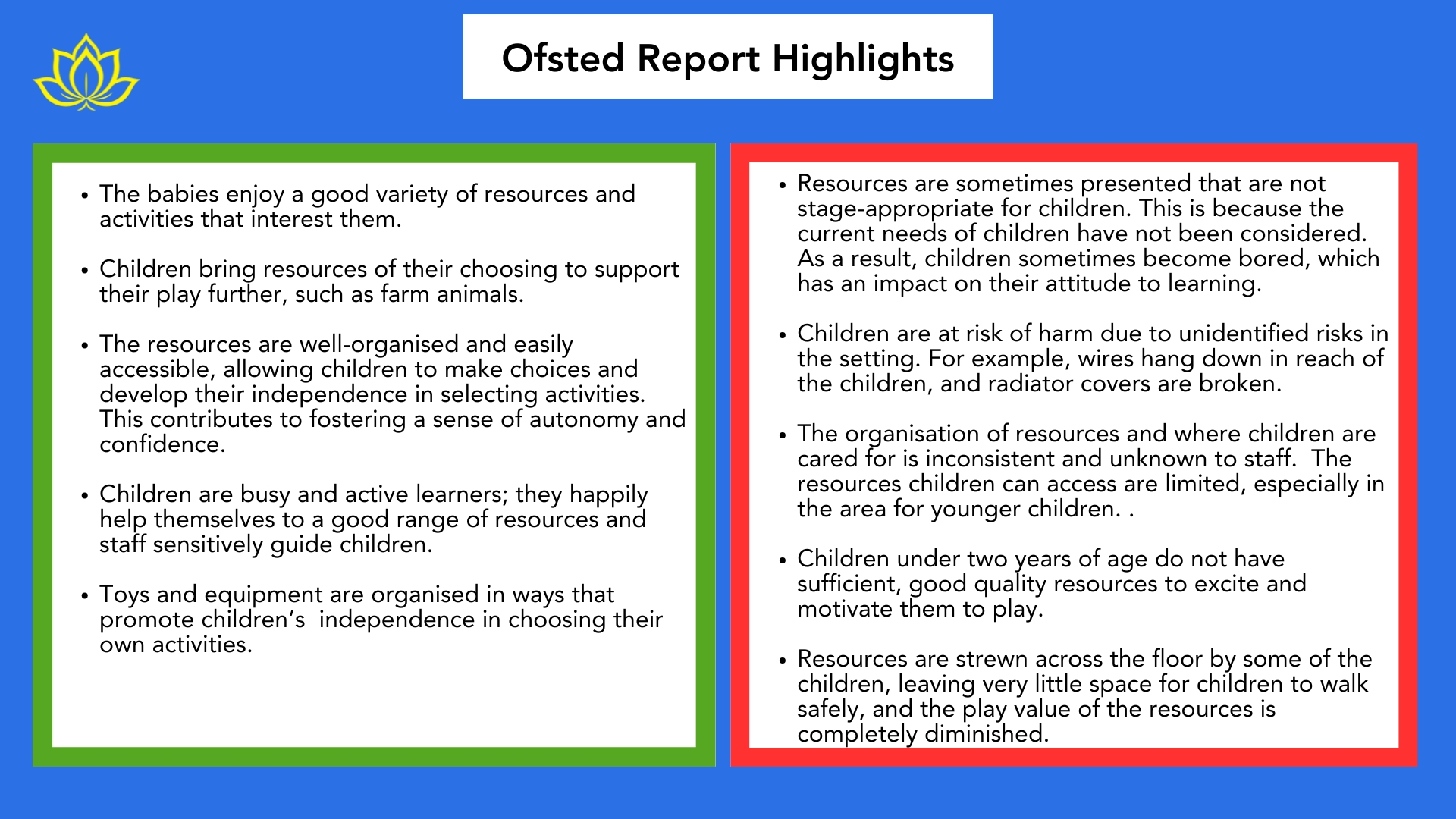
Where are you at with your resourcefulness right now, is it consistent across your team?
Task One – Time for some reflection
- Do staff know where to find all the resources?
- Do they staff know they can borrow items from other sites/rooms?
- Are staff shown how to use items appropriately or corrected if they are not used appropriately?
- Are staff treating the items like they would if they bought the items themselves and showing the children how to use it properly?
Let’s take this a little further…
Task Two – What level are you at?
Thinking about your current practice, which of these 4 statements reflects how you treat the resources in your setting.
- Resources are used fully and creatively to consistently provide stretch and challenge
- Resources are utilised fully
- Resources are not used consistently to their full potential
- Resources are not used appropriately
Be open and honest with your team (and yourself) about where you think you are at currently.
What change might be needed and why?
Change might be needed if you find yourself offering the same activities repeatedly, simply because you’re unsure where other resources are or how to access them. You might feel hesitant to bring new materials into the room, or even find yourself comparing your setup to other rooms or sites that seem better equipped. Taking a moment to reflect can reveal opportunities for growth. Start by evaluating which resources you’ve actually used over the past couple of months—what’s worked well, what’s been left untouched, and why. Think creatively: could you repurpose a familiar resource in a new way, or combine two to create something different? And importantly, do you know who to speak to if you need to borrow or share resources? Sometimes a small shift in awareness and communication can lead to big improvements in what you’re able to offer children.
Task Three: The Importance of Communication
How many times do you say – “just leave it there I will put it away later as it is too complicated to tell you where to put it” or “don’t worry I will get it” even though you were already doing 3 things at once?
Pick something in your resource cupboard and without looking, can you give a colleague clear step by step instructions on where to find it? Try and do this with 3 common items you get asked about.
Extension:
Go into your resource cupboard, spent 5-10 minutes looking in each box or tray. Show your continuous curiosity and choose 3 very random resources and remember where they are.
At the end of this course can you go and locate those 3 resources again and plan how you are going to incorporate them into an activity with the children.
What do some of the pioneers of Early Years say on this…
Care of the furniture, the objects, and the activity spaces is an educational act that generates psychological wellbeing, a sense of familiarity and belonging, aesthetic sense, and the pleasure of inhabiting. These are also primary premises and conditions for safety in the environments, a quality generated by dialogue and shared elaboration between the different professionals profiles who have to concern themselves and take care of this aspect.
Reggio Emilia
Respect for the environment relates to the proper care for everything within the Montessori classroom. This includes the proper use of the Montessori materials, packing away, and taking care of all things living and non-living within the environment.
Maria Montessori
A little bit of theory – Bandura’s Social Learning Theory
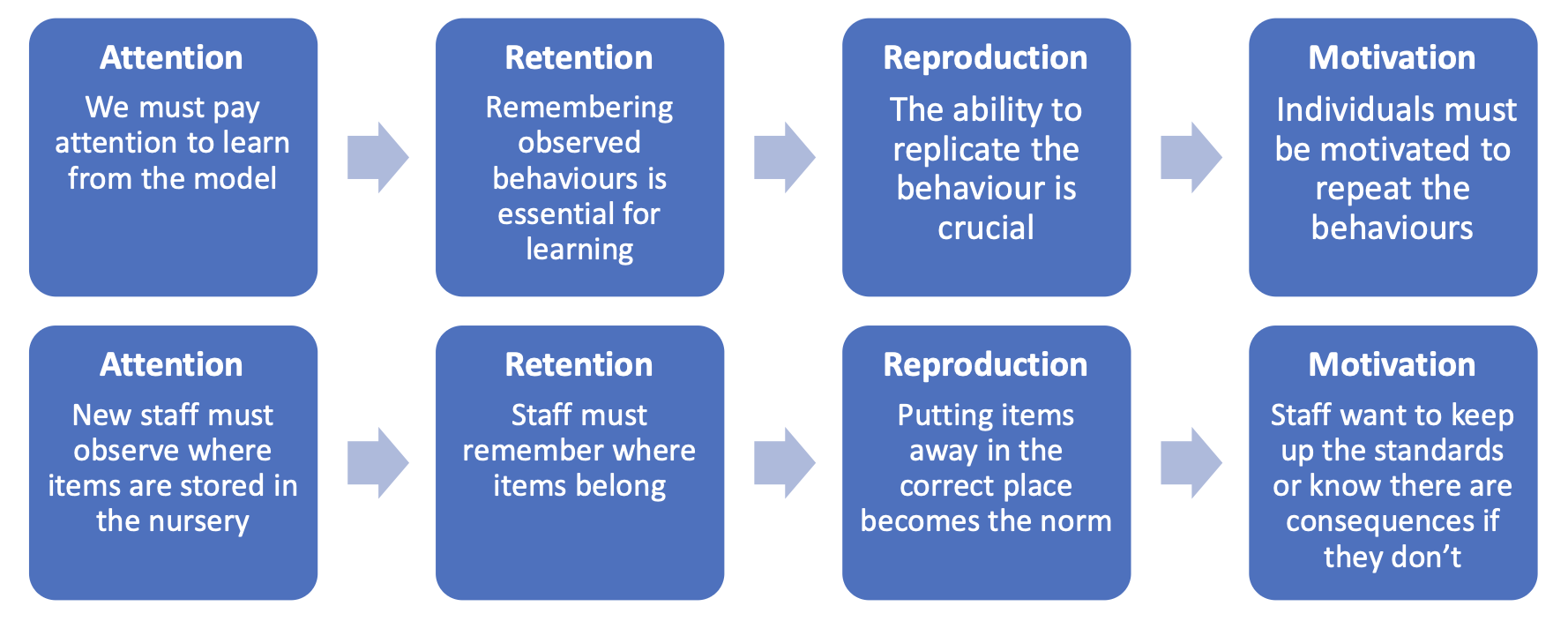
Key components of learning through observation and setting those standards of how we respect resources in the setting.
Best Practice
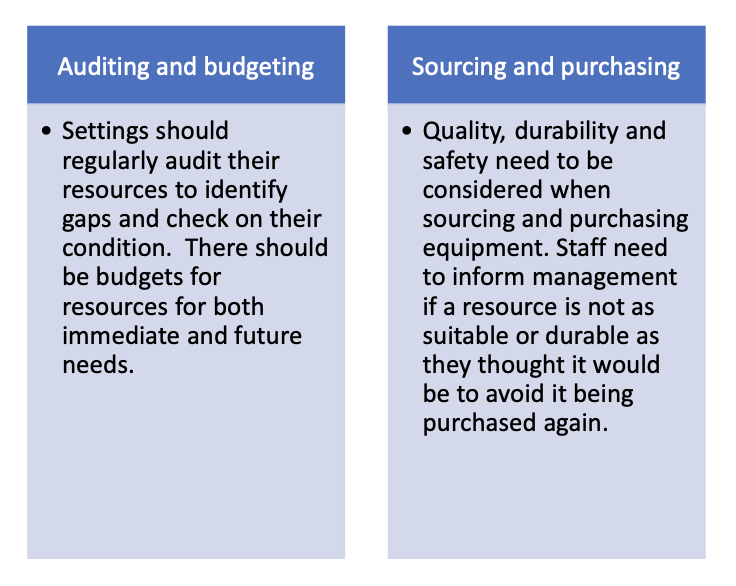
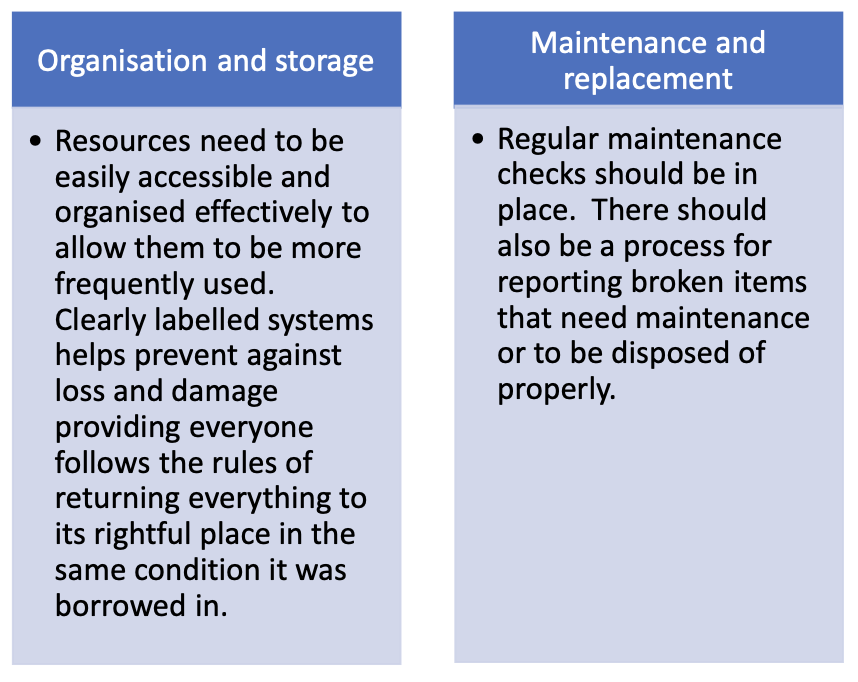
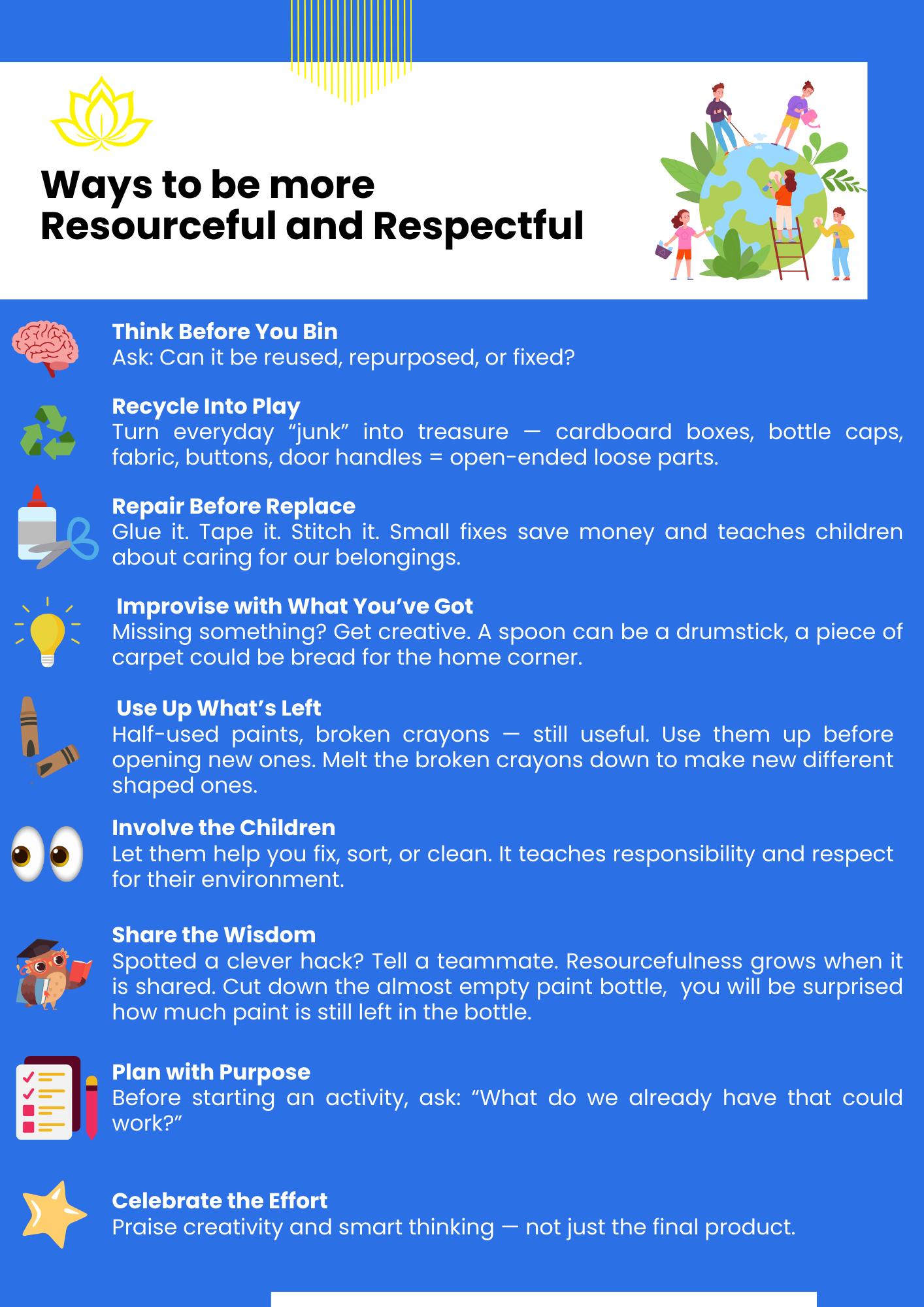
Example of not being resourceful
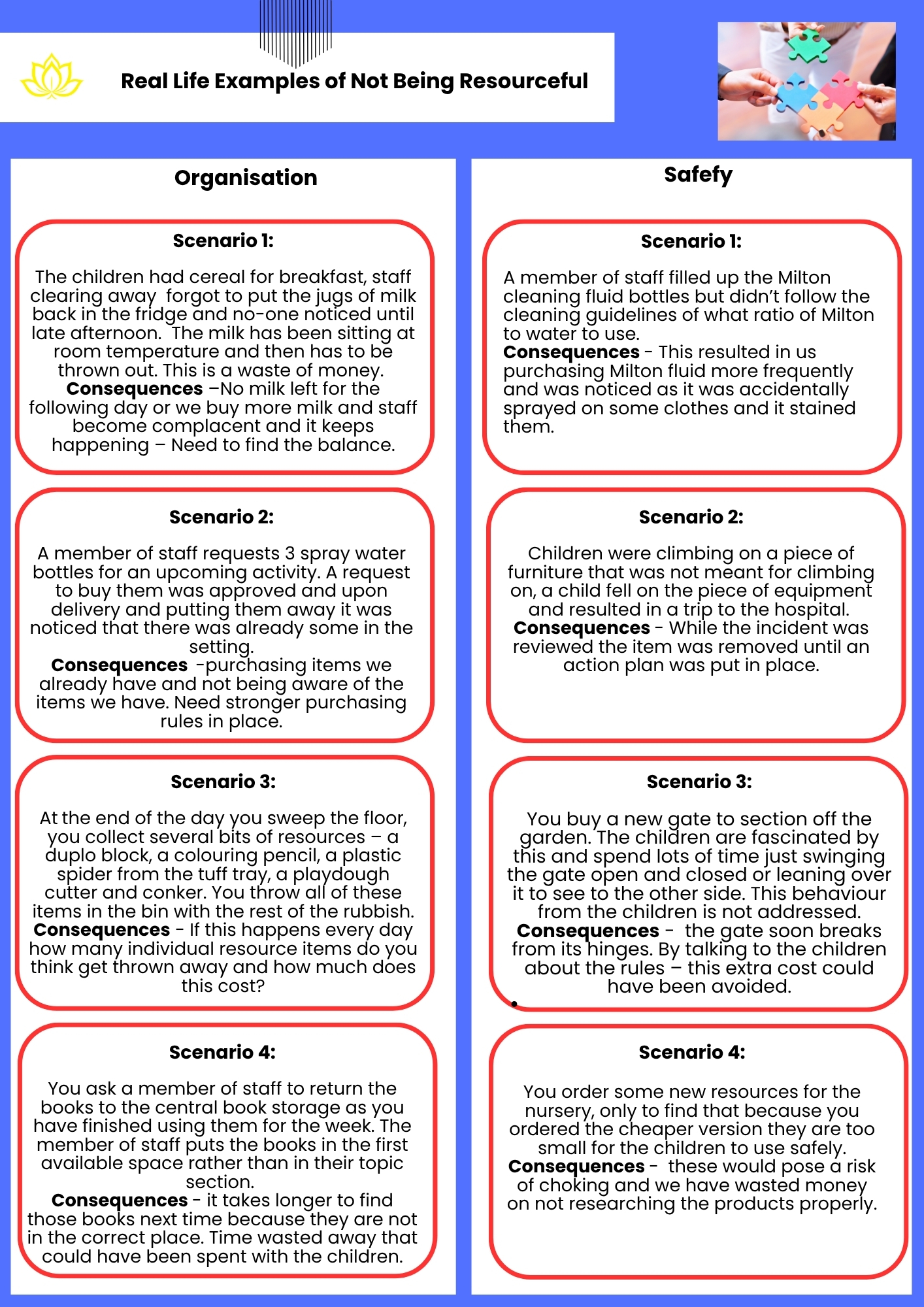
You can’t do it alone – get your team onboard
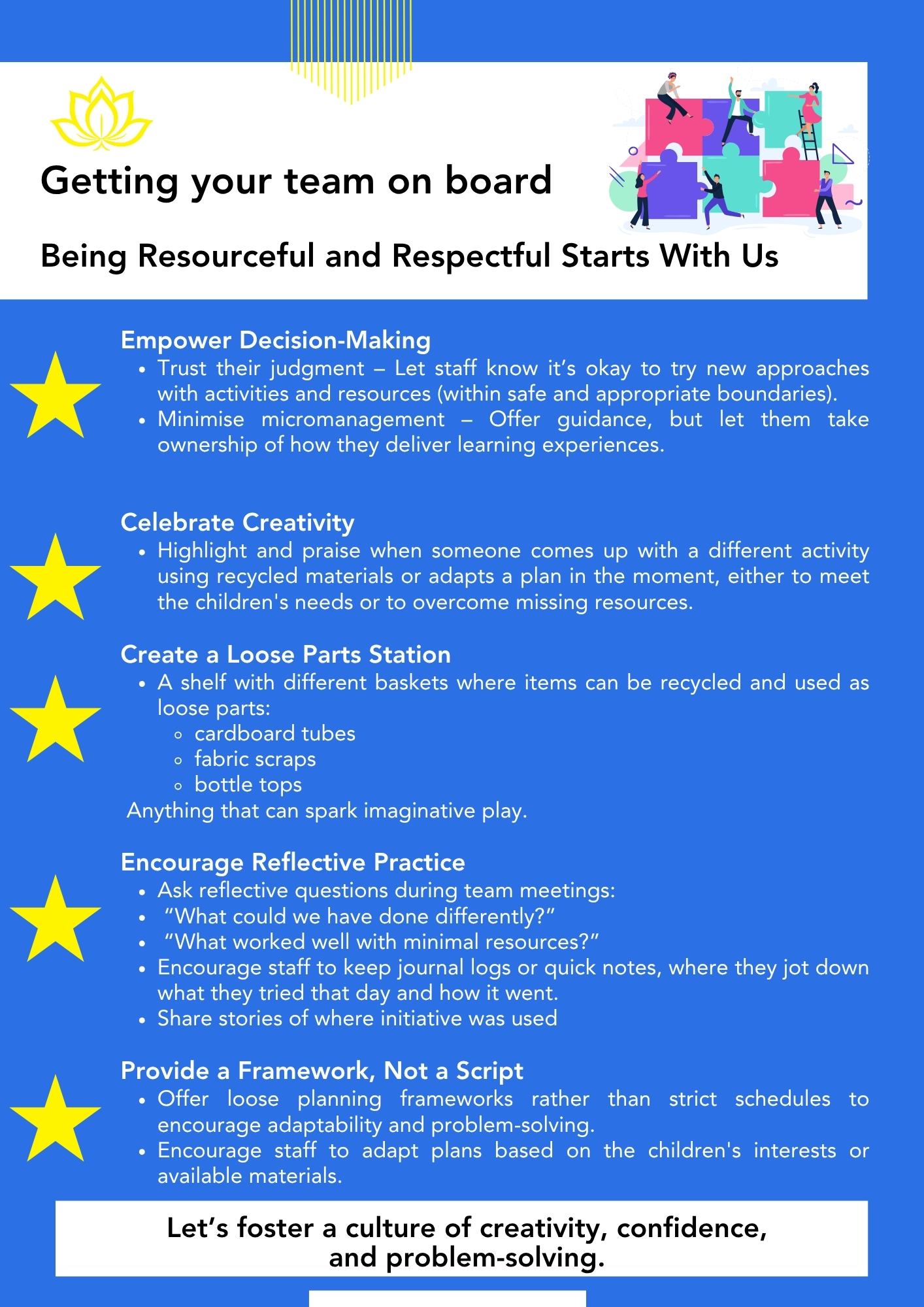
Try the GIST – good ideas for starting things…
- Looking over other rooms news feeds if you can to see their resources and reaching out to them to see if you can borrow them.
- Try combining 2 items together and see what the children learn from them.
- If an item has been purchased for the nursery and you discover it is not robust enough then inform senior team so we can avoid buying the same item again.
- Think about induction – or, are we showing staff where everything is kept and how we like it to be put away. Can you help a new team member get up to speed today?
Want to learn more?
- Page 21 of this will give you some storage ideas
- Explore the Reggio Emilia values in more detail.
